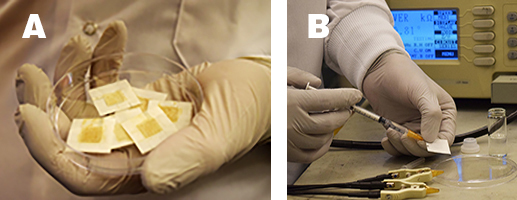Virtual autopsies as a screening autopsy: An Italian experience

Forensic radiology is a well-established specialty, providing support to pathologists performing clinical autopsies. Researchers at the University Hospital of Verona in Italy conducted a study to evaluate and verify the reliability of a virtual autopsy using three-dimensional (3D) reconstruction of computed tomography (CT) images. They reported online July 19th in the Journal of Pathology Informatics that virtual autopsy has a potential role as a screening test in traumatic deaths.
The study included 25 cases in which a virtual autopsy was performed and immediately followed by a traditional postmortem examination. The patients had died from a wide range of causes, including traumatic injuries, respiratory or heart failure, asphyxia due to drowning, hanging, or strangulation, severe burns, and nontraumatic hemorrhage.
Lead author Vito Cirielli, MD, of the Forensic Pathology Unit of the Department of Diagnostics and Public Health, and co-authors compared radiology reports, autopsy findings, and the findings of a forensic pathologist using the virtual 3D reconstruction images. Findings from the virtual autopsy exactly matched the findings of the traditional autopsy in 16 cases, or 64%. In all but one of these cases, the virtual autopsy was sufficient to determine the cause of death with a key role in traumatic cases.
The authors wrote that virtual autopsy provided high-quality details in traumatic cases, especially in causes of gunshot trauma. The authors wrote that “in two of these cases, virtual autopsy defined in an extremely precise manner, the shape of the entrance and exit wounds, the path of the projectile, and all the characteristics of the skill fractures.” They noted that the evaluation of a bullet path through a body aids in the reconstruction of the relative positions of the victim and the perpetrator. It can identify trajectories of objects that caused the trauma and can identify the precise location of fragments within a body. And - a virtual autopsy can be reanalyzed.
>
Virtual autopsies generated two cases of false-positives and two false negatives. In six out of 19 cases, the virtual autopsy gave misleading information, specifically causing the forensic pathologists to overestimate pulmonary findings. In 19 cases, it did not provide any additional information that had not been identified in the conventional autopsy.
“The results of our work show that virtual autopsy is helpful in the investigation of traumatic deaths, especially when more than one part of the body is involved such as in traffic accidents and falls from height or in gunshot injuries,” they wrote. “On the other hand, virtual autopsy did not provide useful information in cases of natural death and mechanical asphyxia.”
“Virtual autopsy can be recommended as an alternative diagnostic practice when conventional autopsy is not possible and may play a role as a screening test for traumatic deaths,” concluded the authors.
REFERENCE
- Cirielli V, Cima L, Bortolotti F, et al. Virtual autopsy as a screening test before traditional autopsy: The Verona experience on 25 cases. J Pathol Inform. 2018 Jul 19;9:28. doi: 10.4103/jpi.jpi_23_18.
